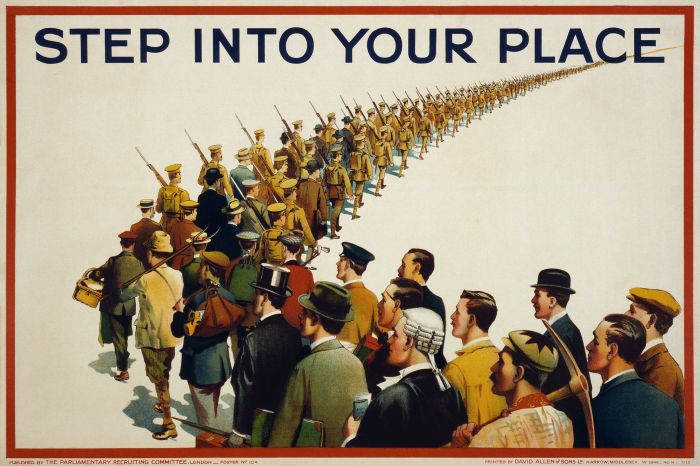In the annals of warfare, propaganda in war posters answer key has played a pivotal role in shaping public opinion, galvanizing support, and influencing the course of history. This comprehensive guide delves into the intricacies of propaganda techniques, their impact on society, and their enduring legacy.
From the iconic posters of World War I to the modern use of social media in contemporary conflicts, this analysis provides a thorough understanding of the strategies and consequences of propaganda in wartime.
Define Propaganda and its Role in War
Propaganda is a deliberate and systematic dissemination of information, often with the intention of promoting a particular point of view or influencing public opinion. In wartime, propaganda plays a crucial role in shaping public perceptions, mobilizing support for the war effort, and undermining the enemy’s morale.
Historical Examples of Propaganda Campaigns
- The use of propaganda posters during World War I and World War II to promote patriotism and encourage recruitment.
- The Soviet Union’s use of propaganda to glorify the Red Army and demonize Nazi Germany during the Cold War.
- The United States’ use of propaganda to justify the Vietnam War and rally public support for the troops.
Ethical Implications of Propaganda
The use of propaganda in war raises ethical concerns, as it can be used to manipulate public opinion, spread misinformation, and incite hatred. However, proponents argue that propaganda can also be used to promote legitimate causes, such as defending against aggression or mobilizing support for humanitarian efforts.
Analyze Propaganda Techniques in War Posters

Common Propaganda Techniques
- Bandwagon:Creating the impression that everyone is supporting a particular cause or idea.
- Glittering Generalities:Using vague and emotionally appealing language to create a positive image.
- Name-Calling:Attacking opponents with negative labels or stereotypes.
- Transfer:Associating a person or cause with positive or negative symbols or images.
Emotional Appeal and Public Opinion
Propaganda posters often use emotional appeals to influence public opinion. They may evoke fear, anger, patriotism, or a sense of urgency to persuade viewers to support a particular cause.
Examples of Propaganda Posters
The iconic “Uncle Sam Wants You” poster from World War I is an example of a propaganda poster that used emotional appeal and the bandwagon technique to encourage recruitment.
Propaganda Posters as Historical Documents
Value as Historical Artifacts
War posters provide valuable insights into the social, political, and cultural context of their time. They reflect the prevailing attitudes, beliefs, and values of the society that produced them.
Reflection of Public Perceptions
Propaganda posters shape public perceptions of war and its impact on society. They can influence how people view the enemy, the sacrifices of war, and the role of their own country in the conflict.
Design Elements of War Posters
Visual and Graphic Elements
War posters employ a range of visual and graphic elements to convey their messages effectively. These elements include:
- Color:Bright and contrasting colors are used to attract attention and create a sense of urgency.
- Typography:Bold and eye-catching fonts are used to emphasize key messages and slogans.
- Imagery:Powerful and evocative images are used to convey emotions and create a lasting impression.
- Symbolism:Symbols and metaphors are used to represent complex ideas and values.
The Impact of Propaganda Posters on Society
Short-Term and Long-Term Impact
Propaganda posters can have both short-term and long-term effects on public opinion. In the short term, they can influence wartime mobilization, recruitment, and support for the war effort.
In the long term, propaganda posters can shape public memory and understanding of war. They can contribute to the creation of national myths and narratives about the conflict.
Propaganda Posters in Different Wars
Similarities and Differences, Propaganda in war posters answer key
While propaganda posters share certain common characteristics, there are also significant similarities and differences in their use across different wars.
- World War I:Posters emphasized patriotism and recruitment.
- World War II:Posters focused on demonizing the enemy and promoting unity.
- Vietnam War:Posters reflected the anti-war movement and questioned the legitimacy of the conflict.
Technological Advancements
Technological advancements have influenced the production and dissemination of war posters. Digital technologies and social media have made it easier to create and share propaganda posters with a wider audience.
Contemporary Uses of Propaganda in War: Propaganda In War Posters Answer Key
Continued Use of Propaganda Techniques
Propaganda techniques continue to be used in modern warfare, albeit in more sophisticated and nuanced ways. Social media, digital technologies, and other communication channels are now used to spread propaganda messages.
Ethical Considerations
The use of propaganda in contemporary war contexts raises ethical concerns, as it can be used to manipulate public opinion, spread misinformation, and incite hatred. It is important to be aware of these potential risks and to promote responsible and ethical communication during wartime.
User Queries
What is the primary purpose of propaganda in war?
Propaganda in war aims to influence public opinion, shape perceptions, and mobilize support for the war effort.
How do war posters employ emotional appeals?
War posters often use vivid imagery, patriotic symbols, and emotionally charged language to evoke strong feelings and sway public opinion.
What are the ethical considerations surrounding the use of propaganda in war?
The use of propaganda in war raises ethical concerns regarding the manipulation of information, the suppression of dissent, and the potential for inciting hatred and violence.